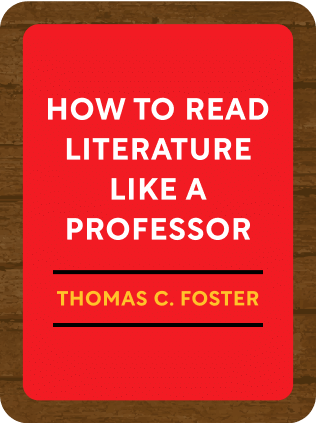

This article is an excerpt from the Shortform book guide to "How to Read Literature Like a Professor" by Thomas C. Foster. Shortform has the world's best summaries and analyses of books you should be reading.
Like this article? Sign up for a free trial here .
What does it mean to read and analyze literature like a professor? What are the differences between how a student and teacher reads literature?
When a student reads literature, she tends to focus on the characters, plot, and emotions. When a professor reads literature, she focuses on memory, symbols, and patterns in the story and looks for the deeper truths.
Keep reading to learn how professors go about reading literature.
What It Means to Read Literature Like a Professor
A literature professor is always looking for meaning and significance beyond the text of a novel, poem, or play. If you want to know how to read literature like a professor, here’s an example:
In the play A Raisin in the Sun by Lorraine Hansberry, the protagonist, Walter Lee Younger, moves his African American family into an all-white community. A white man named Mr. Linder comes to Walter with an offer: He wants to buy the Younger family out of their claim on the house. Although the offer is insulting, Walter Lee is forced to consider it. This is one of the play’s primary dramas.
Imagine you’ve just read the play. Would you be surprised to hear your literature professor say that Mr. Lindner is the devil? Would you have come to that conclusion on your own?
If not, that’s okay. That means that you, the student, and your professor have read the same story, but not in the same way. Your professor has had practice analyzing literature and finding its conventions and codes. She has the skills to remember instances of bargaining with the devil in other stories, and connect that pattern to Mr. Lindner through common plot devices and themes.
So what is the difference between reading like a student and reading like a professor?
Students:
- Focus mostly on the plot and characters in a story.
- Respond to the story first on an emotional level.
Professors:
- Focus mostly on memory, symbol, and pattern in the story.
- Accept the emotional response, but look deeper to find the universal truth displayed.
Memory, Symbol, and Pattern
Memory: When you read with a powerful memory, you actively look for how the text corresponds to other literary works. You mentally flip through the things you’ve read before and look for similarities (or differences) to the structure, theme, or characters of what you’re reading now.
- Example: Watching Pale Rider starring Clint Eastwood might make you think of the movie Shane from 1953.
Symbol: When you read literature with a symbolic mind, you constantly look for metaphors and analogies. You not only see things for what they actually are, but also what they might represent.
- Example: The monster in Beowulf is not only an actual monster, but also a representation of the dark side of human nature which can only be overcome by achieving a higher version of ourselves.
Pattern: When you read to observe patterns, you recognize the similarities between life and books. You look beyond the plot to see how the drama and characters illustrate a truth of human experience.
- Non-literary example: A good car mechanic can use pattern recognition to diagnose a car. They can see that if these things are happening, it is probably caused by this. Then they know to check that.
The combination of using memory, identifying symbols, and recognizing patterns allows the reader to analyze literature in a new light. If you ignore memory, symbols, and patterns in literature, you will not be able to appreciate a book for everything that it says between the lines.

———End of Preview———
Like what you just read? Read the rest of the world's best book summary and analysis of Thomas C. Foster's "How to Read Literature Like a Professor" at Shortform .
Here's what you'll find in our full How to Read Literature Like a Professor summary :
- How to get more out of the novels that you read
- Why you should focus on memory, symbols, and patterns to understand literature better
- Why sex scenes aren't always about sex






